Famous from battlefields around the world, the Russian designed RPK (Ruchnoy Pulemyot Kalashnikova), is literally named “Kalashnikov’s hand-held machine gun”. (Russian: РПК Ручной пулемёт Калашникова)
I encountered RPKs in the field all over the world with allies and foes alike. It remains popular with insurgents and irregulars. The AK and RPK has a huge fan club in the US. American made receivers and imported parts kits with quality 922R parts have made 7.62x39mm RPK clones very popular. They still pop up on the used market even during the plague.
The RPK is a gas operated, magazine fed, air cooled, shoulder or hip fired selective fire rifle. It shares a long-stroke gas piston and a rotating bolt with the AK. Both AK and RPK use the same ammunition and magazines but the RPK typically uses 40 round magazines or 75 round drums.

Developed by Mikhail Kalashnikov in the early 1960s, the RPK was intended to compliment the AK47s of a rifle squad with high-volume fire support. I first saw the RPK in foreign weapons training at the Infantry School.
I have previously told the story of the AK. The AK47 weighs 6.5 pounds and is 35 inches long. The RPK is 10.6 pounds, and 40.9 inches long RPK. When I got to shoot the RPK, I realized this was NOT just another AK. Heavy is good when you shoot a machinegun. The AK is difficult to control on full auto. While it looks like an AK, there are key differences in the RPK.
The RPK has a heavier trunnion and barrel with thicker receiver than the AK47 (1.55mm vs 1mm). This extra thickness not only adds weight, but it reduces fatigue and flex for extended firing. No one ever said that the AK was flimsy, but Kalashnikov doubled down on strength.
A special clubfoot stock (derived from the earlier RPD that it replaced) provides a support hand grip when prone. The heavier and longer barrel with a bipod is perfect for sustained automatic fire in the prone. The RPK lets you hang on for more hits for your rock and roll dollar (or Russian Ruble as the case may be).
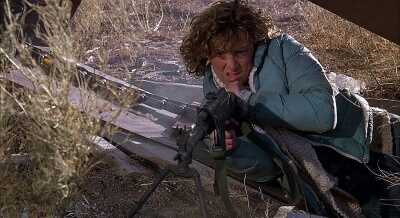
After carrying all that heavy ammo around the battlefield, you want to do more than just make noise when you shoot it. I learned in the Infantry School that the best way to suppress the enemy is a couple of quick hits in the torso.
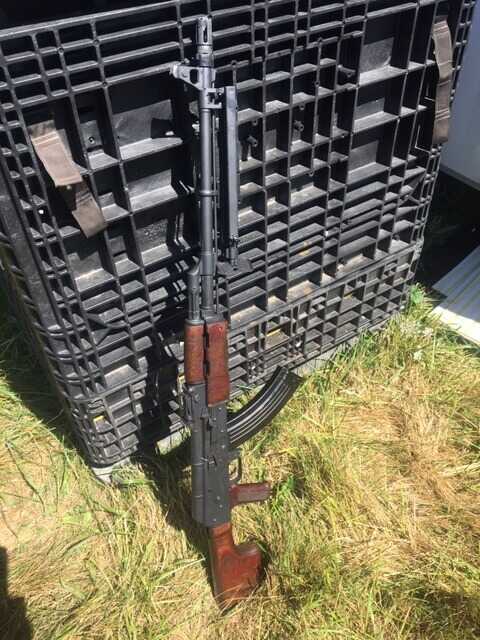
RPK Specifications:
Caliber 7.62×39 mm
Weight 10.5 lbs empty
Length 41 in
Length of barrel 23 in
Feeding box magazine 40 rounds, or drum 75 rounds
Rate of fire 600 rounds per minute
The RPK has been largely replaced in Russia, but many other countries still field the RPK including Afghanistan, Cuba, Egypt, Ethiopia, Iran, Iraq, Libya, Mongolia, North Korea, Somalia, Vietnam, and Yemen. RPK variants were produced in Russia, Albania, Romania, Bulgaria, North Korea, and Iraq.

Let’s look at just a little history. First there were muskets, then rifles. In 1884, the Maxim machinegun changed everything. The recoil-operated machine gun invented by American-British inventor Sir Hiram Stevens Maxim was the first automatic firearm in mass production. It provided awesome firepower, even by today’s standards, but it weighed 60 pounds with tripod and the required tank of water. It needs a four man crew to keep it running.
It was used into the 1960s because of a trick no modern machinegun can pull off. In a water-cooled system, the cyclic rate equals the sustained rate. This means that as long as you can keep the water jacket full and the full belts of ammo coming, the gun will run at full speed indefinitely. There is an amazing story of a British WW1 machine gun section going through almost one million rounds of ammunition in half a day.
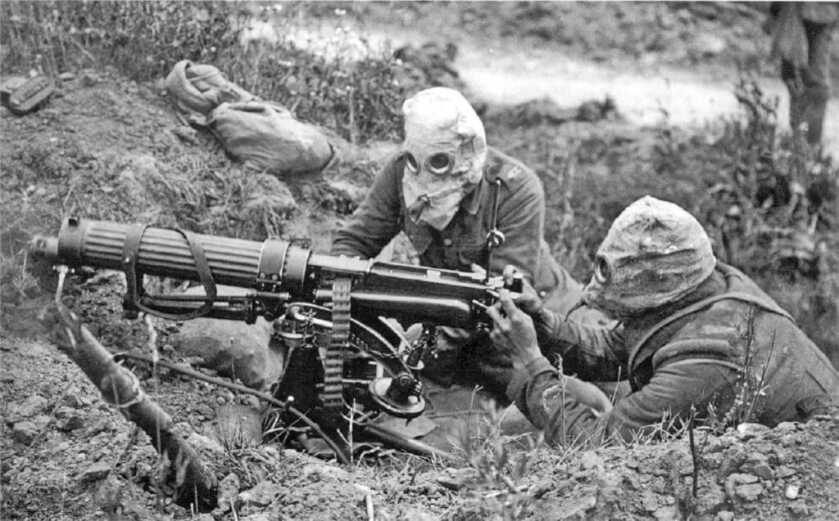
Heavy machine guns were great for defense, but of little use in the attack. Advancing infantry quickly left their fire support behind. The French conceived a light machinegun and declared that “the machine gun must learn to walk”. They researched the possibility of a light gun that could be carried by troops.
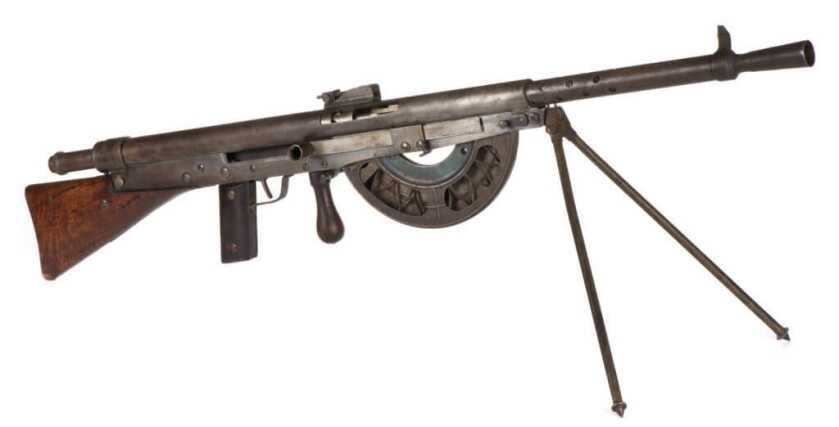
A light machine gun (LMG) is a light-weight gun designed to be operated by a single infantryman. It can be fired on the move to provide suppressive fire intended to pin down the enemy or shot from a bipod as a base of fire for the squad to maneuver.
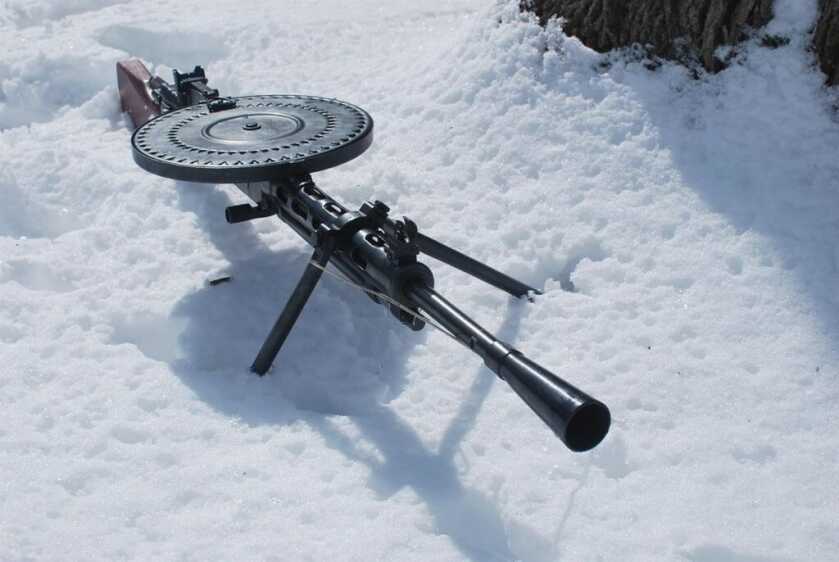
Ammunition commonality with infantry rifles is very desirable. Some LMGs, like the Russian RPK, the US Marines M-27 Infantry Automatic Rifle, and the American Squad Automatic Weapon are designed to share the same magazine. (I know some of you are thinking that the SAW is belt fed. It is, but it has the ability to use M-4 magazines as well. Good job FN). It is easier to get the squad to carry extra ammo if it fits their guns too.

LMG’s are adapted to sustained full auto fire with larger magazines, heavier barrels to resist overheating, a more robust receiver to support sustained fire, and a bipod.
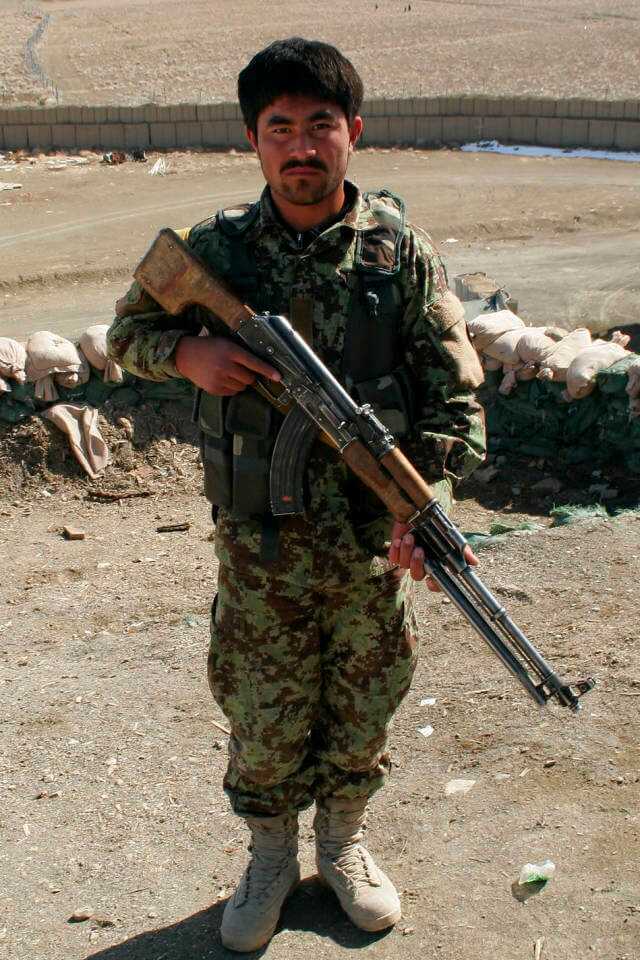
In World War II, light machine guns were usually issued one per squad. The Lewis gun, BREN gun, M-1918 BAR, DPM, and Type 99 Nambu are all examples of the LMG. Modern infantry squads are organized and equipped based on tactics built around the use of the LMG to provide suppressive fire.
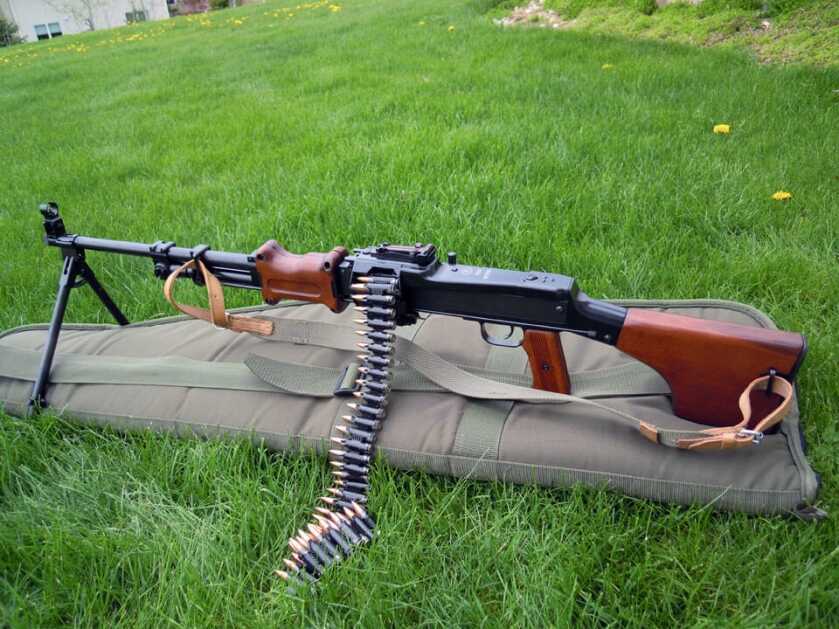
In the 1950s Soviet army started developing replacements for their SKS carbines, AK47 rifles, and RPD LMGs. The success of the AK-47 led to the Soviet military asking for a similar design to replace the Degtyarev RPD.
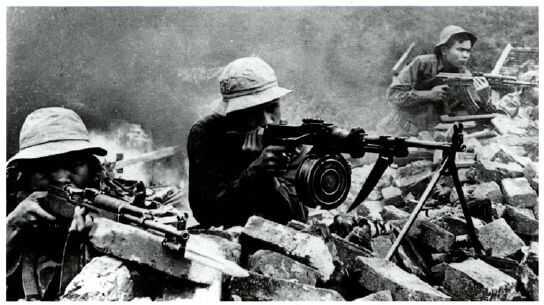
Several designers submitted prototypes. In 1961, the Soviet army selected the Kalashnikov system, comprising of a modified AK47 rifle and RPK squad automatic weapon but they did not enter service until 1964. Each infantry squad was issued one RPK with the 75-round drum magazine. Airborne units were issued the RPKS which featured a folding stock.

Soviet doctrine is still followed fairly consistently in post-Soviet armies. The US Army had an elaborate manual titled “Armed Forces of the Soviet Union” which was the capstone of all opposing force doctrine. When the Soviet Union collapsed, the US Army looked around, saw little had changed in equipment or doctrine and replaced the cover. The manual suddenly became “Armed Forces of the former Soviet Union”
Russian tactics were developed in WW2 and evolved as new technology arose. The burp guns matured into AK-47s and infantry fighting vehicles carried troops around the battlefield. The RPK came out in the 1960s and the Russian order of battle changed to incorporate it.
The basic maneuver unit is the squad. Infantry is mounted in an armored personnel carrier (APC). Each Rifle Squad consists of 6 dismounts (soldiers who get out of the vehicle and fight in close terrain on cities) and a 2 man vehicle crew. The dismounts include the Squad Leader, Senior Rifleman, Machine Gunner, Grenadier, Assistant Grenadier, and Rifleman.
The dismounts are split into a Fire Group and Maneuver Group. The Fire Group is led by the Squad Commander and consists of the Machine Gunner (armed with an RPK), Grenadier (armed with an RPG-7 and 2 rockets), and Assistant Grenadier (armed with an AKM and 3 additional rockets.

The Squad Leader will be positioned so as to best control the Fire Group. The Maneuver Group consists of the Senior Rifleman and Rifleman, who are both armed AKM rifles. In some cases, the rifleman would have an SVD rifle. In the attack, the Fire Group and vehicle weapons provide cover for the Maneuver Group as it moves under the direction of the Senior Rifleman.
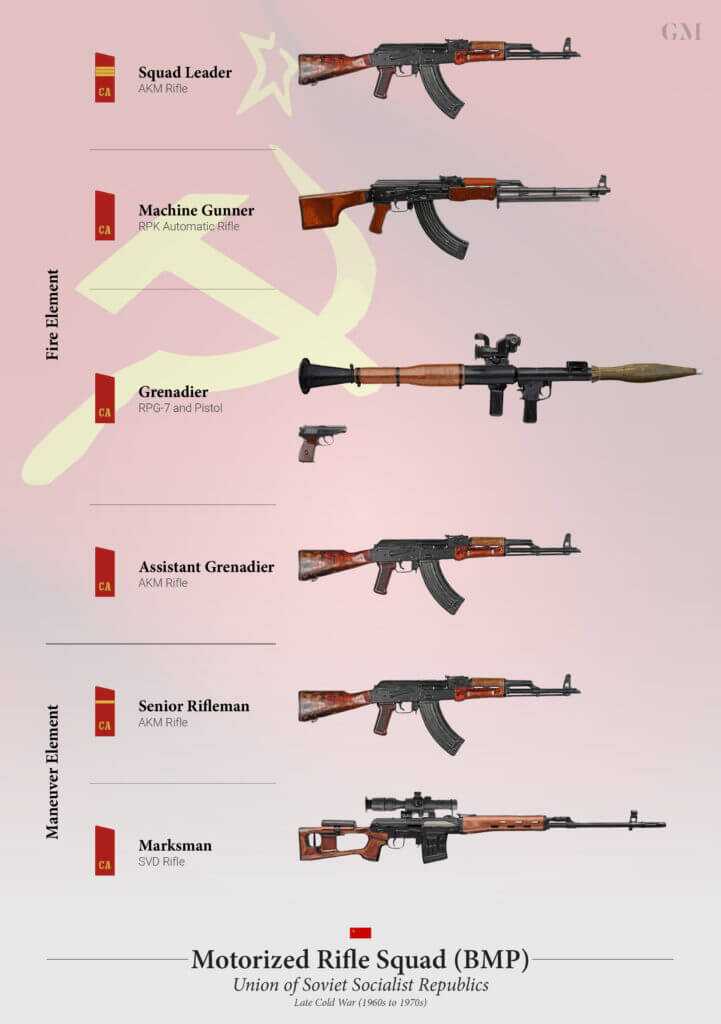

The most common magazines for the RPK are 40 round curved box magazines made from stamped steel. 75 round steel drum magazines were also produced but they were expensive, heavy, and awkward to carry. Drums are bulky and don’t fit into nice flat pouches. The weight of a 75 round drum is not conducive to movement.

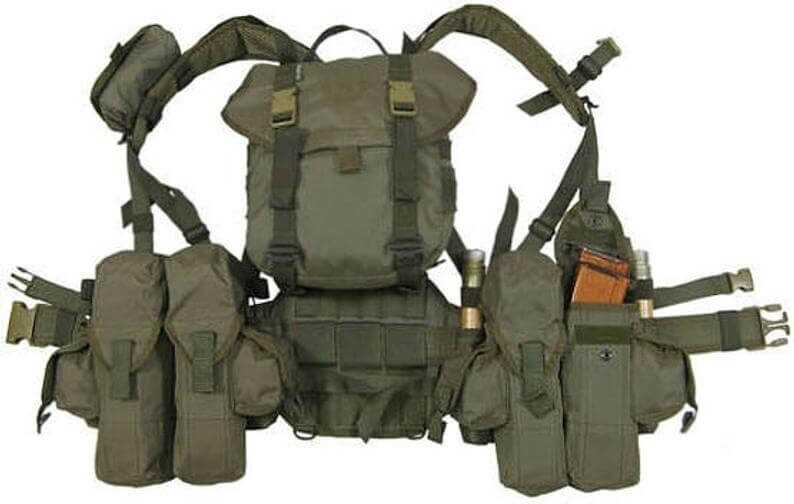
My RPK was built on a Childer’s receiver with an Apex Romanian surplus parts kit. I used a Green Mountain chrome lined barrel for accuracy and long service life threaded in 14 x 1 left-handed thread. I replaced the springs with a Rifle Dynamics spring kit. No way to tell how worn the old recoil spring was. As an SOT, I was able to build a select fire Post-86 Dealer’s Sample.

The Childers Guns Romanian RPK Receiver will work for Romanian, Russian, and most other RPK parts kits. It will not work with Yugo kits unless it is modified.
Each receiver is custom made and custom Serial Numbers are available. I used the serial number of my parts kit so that everything matched. The receiver is heat-treated in a salt bath to 40 HRC and the center support is installed.
Holes are machined for trigger guard rivets and the fire control group using CNC to ensure accuracy. The lower rails are spot welded to the receiver.

Romanian arms manufacturer Fabrica de Arme Cugir made an RPK variant known as the MD-64 using the original Soviet specifications. The Apex kit is complete LESS the stamped receiver. The kit includes the original fire control parts which will need to be replaced in a semi build. You may also need to add 922 R Compliance parts. If you don’t know about 922R, it is a law that requires that an imported rifle shall not have more than 10 imported parts from a list of 20.

Chambered in 7.62×39, this kit includes a fixed wood club foot stock, wood upper and lower handguards, and polymer pistol grip. The original bipod is included with mounting hardware.
My kit came with a matching number bolt, carrier, and front trunnion.
It included ad original 23″ chrome-lined barrel but I decided to upgrade to Green Mountain. An unexpected benefit of the ATFE’s ban on the import of shot out rusty parts kit barrels is a stunning improvement in the cost and quality of AK barrels available.

While Soviet designs are simple and rugged, their manufacture is a sophisticated process requiring some precision to build a safe gun. These parts must be inspected and tested by a qualified and competent gunsmith or armorer before use in a firearm.
The guys at Apex put it like this:
“Not all firearm parts are interchangeable; use of surplus parts without proper knowledge could cause a firearm to malfunction and cause property damage, injury or death.“
If you don’t have the skills or equipment to build your own gun. Atlantic Arms was fortunate enough to procure a shipment of these kits from the Romanian Military Arsenal. They build a civilian Legal semi auto configuration that combines the military kits with enough US parts to make the kits 922R legal. They are built with Green Mountain Chrome lined barrels and are threaded in 14 x 1 left-handed so they accept all AK muzzle devices.
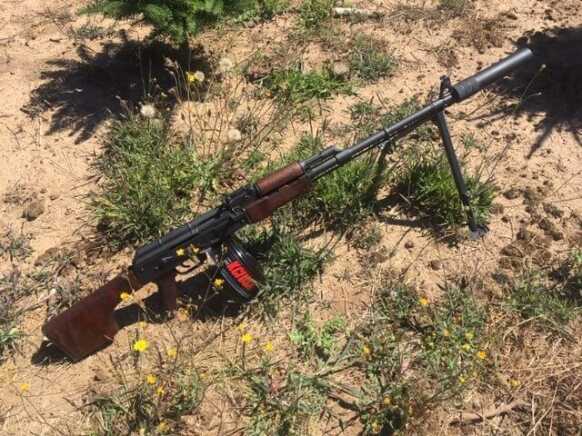
Once I got my RPK put together, I wanted to see how it grouped and get it zeroed. I am not a Special Forces weapons sergeant (18B), but I was trained by Special Forces weapons sergeants. I have zeroed AKs before and have a sight tool. In my experience working with foreign troops, most of the guns are not zeroed. The importance of getting everyone a good zero cannot be overstated. It provides a decisive advantage in effective firepower.
There are a lot of techniques for zeroing. I will not go into theory, but zero is a condition, not a process. There are many ways to get there, you don’t need a special target or specific distance.
Zero is the distance where the sights are looking at the point of impact. I did some research and found an RPK technique that I liked. The RPK has a longer sight radius than the AK but the sight adjustments have been modified accordingly. With the sights set at 200 meters, the bullet should hit at the same place at 25 yards and 218 yards (200 meters).
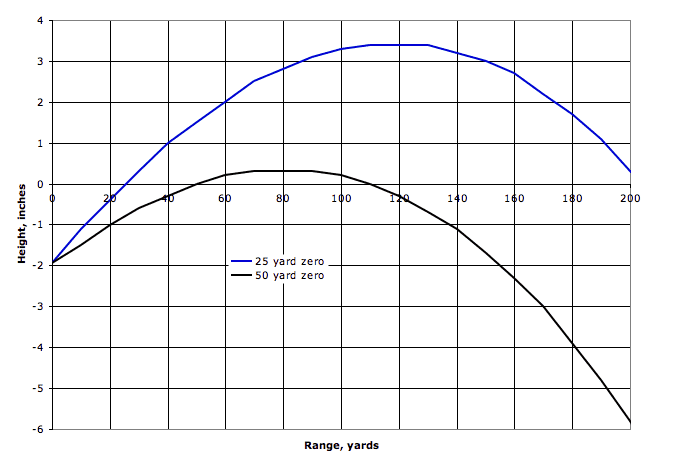
I started at 25 yards. This is a nice distance to get on paper and you can see your holes without a lot of walking. The RPK has adjustable sights with settings from 100 to 1000 meters. This simple ballistic cam is great for area fire. I set the RPKs sights at 200 Meters to match the ballistic curve I wanted, the blue line on the chart. I was going for point of aim point of impact at 25 yards. Don’t let meters and yards confuse you. I prefer to think in yards and my range is laid out in yards, so the chart is in yards and the sights are in meters.
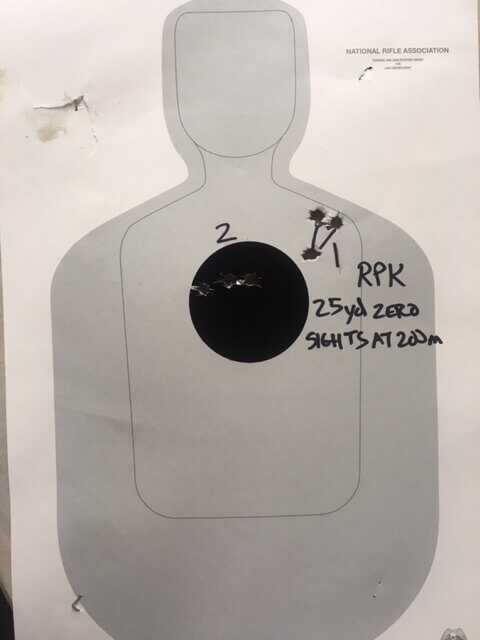
I shot a three-round group and calculated that I needed one full revolution down and one rotation left. This was an educated guess.
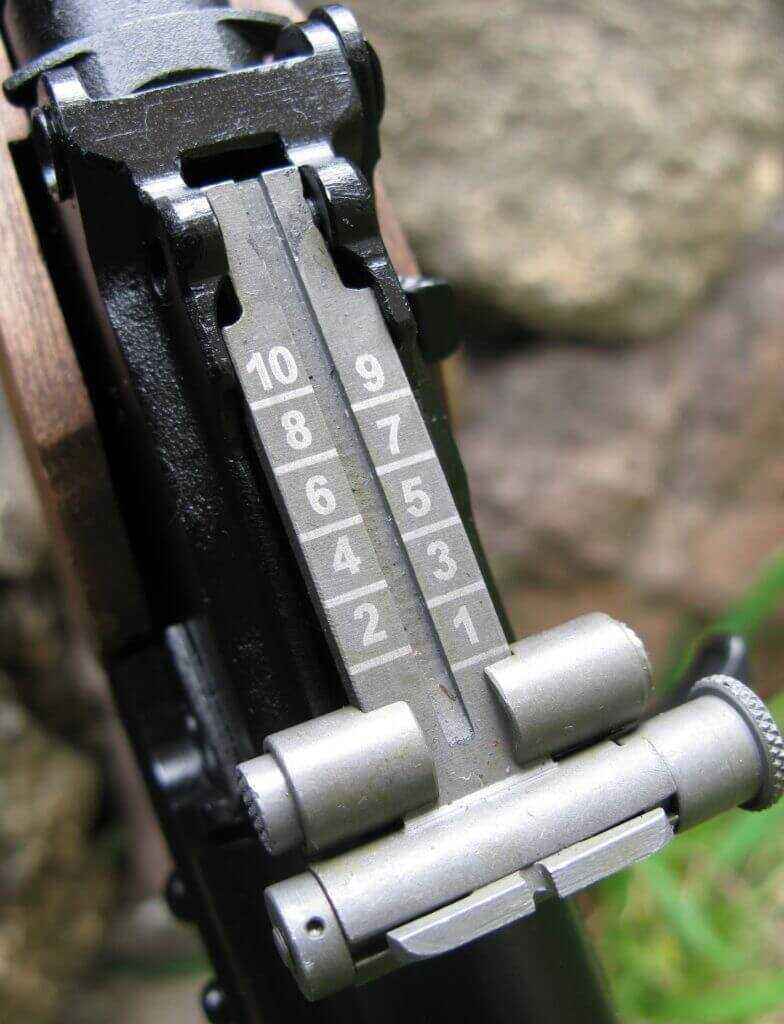
The second group came out very close to the center of the circle, so, I set the sights to 100 and confirmed that I was zeroed with the ballistic cam.
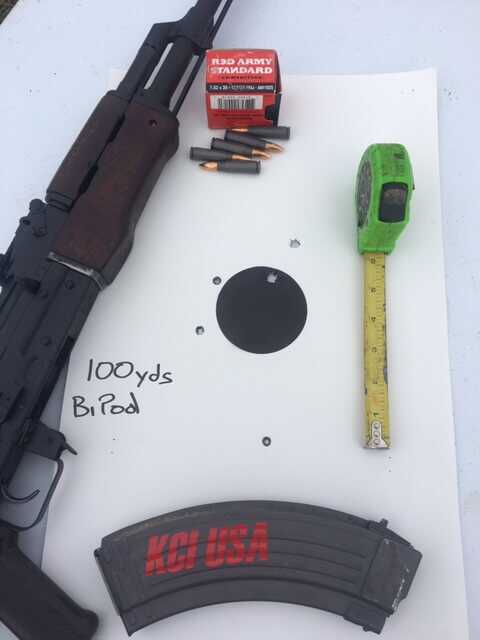
The group was acceptable. The Red Army Standard ammunition is a good match for surplus loads and this is a fair representation of accuracy. I was lucky that my first shots were on and my calculations worked out. Next step 200 meters.
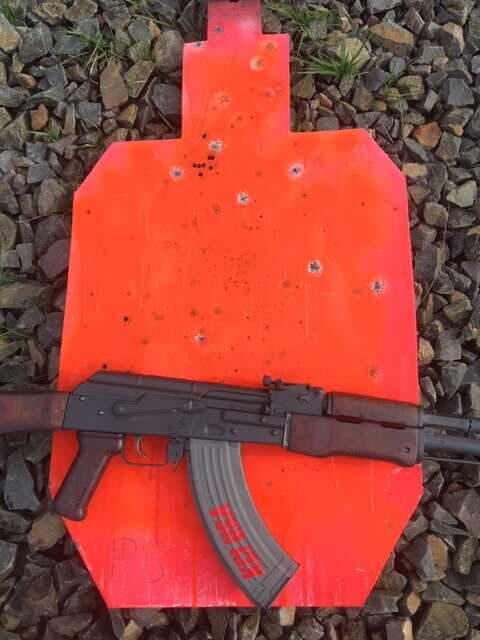
At 200 meters, the front sight is the full width of the silhouette. You can get a good sight picture but there is little space in the rear sight so it is tough to get a quick sight picture. I got my hits and the ballistic cam worked perfectly. I believe with this ammunition that it would be ballpark accurate out to 1000 meters (with increasingly large beaten zones). For me, past 200 meters without optics, the RPK is an area weapon.
Russian engineers did the math on the ballistic curve so you don’t have to. On a gun like the AK or RPK with a ballistic cam, you can ignore the markings and just zero on some arbitrary setting. If you take the time to confirm at one of the markings (ie 100 meters or 200 meters), you will have a useable capability at extended ranges. If you don’t confirm your sights, everything but your arbitrary zero is guesswork.
On full auto, it could easily be dialed up to the appropriate distance and suppress a squad. You might even hit some of them at 1000 meters if you could see that far. I have heard stories of the RPK used as a designated marksman rifle. With optics, it should reach out but the original RPK did not have a scope mount.
The sight setting below 100 meters Rear Sight is called the “Battle Setting” and marked with the Cyrillic letters “P”, “N”, or “S”. The battle setting is an 18 meter zero (this produces a 240 to 250 meter zero depending on ammunition and atmospheric conditions). The battle setting provides an arc 7 inches above or below your point-of-aim out to 300 meters.
The RPK is now obsolete. The AK was redesigned in the 1970s to fire the smaller 5.45x39mm cartridge as the AK-74 and the RPK-74 was adapted to accept this new round. The new guns were right on time for Russian wars in Afghanistan and Chechnya in the 1980s.

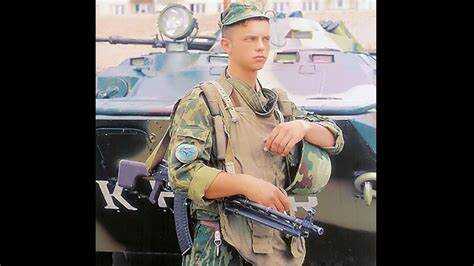
While you may not find the RPK in the Russian Army, its semi-auto cousins are still available on GunsAmerica and in local gun stores across the country. If you want a shooting piece of history, Kalashnikov’s Squad Automatic Weapon may be exactly what you are looking for.
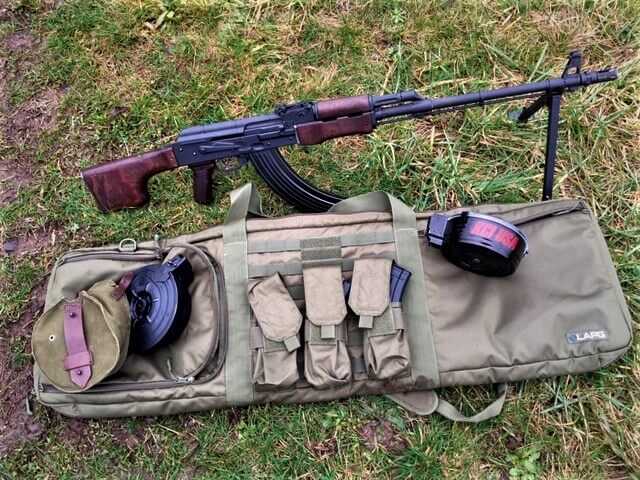


My idea of a ideal combat rifle begins with a rpk in 7.62. The main mod is shortening the barrel to 14inches. Think heavier built akm capable of more automatic fire before needing to cool. They make a 60rd coffin mag that’s the length of a 30rd. Once proven reliable id use these.otherwise it’s 40s
A typical Russian propaganda film (except the music) wherein they demonstrate the superior tech of Russian arms, especially their recoilless tank guns.
Great article altogether.
I received this email at 6am today. It’s noon and these kits are out of stock on Apex Gun Parts. I would have liked to have one.
Interesting and informative, particularly liked the Russian
Rock and Roll vid and the author’s advice on situational t
actics
l